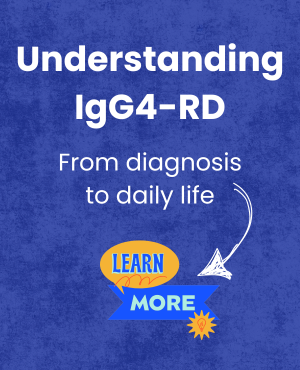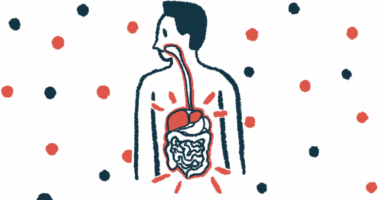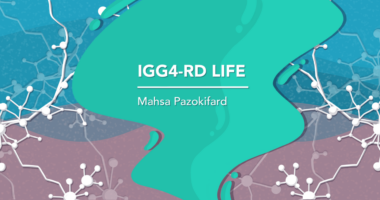Korean study details characteristics of IgG4-related eye disease
Report highlights need for bodywide evaluations for patients

About two-thirds of people with a definitive immunoglobulin G4-related disease (IgG4-RD) diagnosis and eye involvement also have signs of the condition in other parts of the body, according to a study involving patients from more than 20 hospitals in the Republic of Korea.
The researchers say their findings highlight the need for thorough bodywide evaluations for these patients.
“This large-scale investigation will provide critical insights into the epidemiology [disease characteristics] and clinical features of [IgG4-RD] within Korea and contributes valuable data to the global understanding of this condition,” the team wrote.
The report also showed that manifestations of IgG4-related eye, or ophthalmic, disease varied by factors such as sex and how definitive was a patient’s diagnosis. In addition, the team found that surgical intervention was significantly associated with a higher chance of disease remission.
The study, “IgG4-related Ophthalmic Disease: A Nationwide Multicenter Study in Korea,” was published in the journal Ophthalmology.
Records analyzed from more than 300 patients in South Korea
IgG4-RD is a rare condition in which immune cells, including plasma cells that secrete IgG4 antibodies, infiltrate tissues, causing inflammation and scarring. This leads to the formation of tumor-like, but noncancerous, masses that can affect essentially any organ in the body.
Given this, the disease’s symptoms can vary widely. Orbital tissues, or those around the eye sockets, are commonly affected.
“Despite the increasing recognition of IgG4-ROD [IgG4-related ophthalmic disease], comprehensive large-scale studies integrating clinical, [tissue], and treatment-related data remain scarce,” the researchers wrote.
Such studies, however, may help to “better characterize this rare condition, improve diagnostic accuracy, evaluate long-term outcomes, and optimize treatment strategies,” the researchers wrote.
To that end, the team of scientists, from several institutions across Korea, conducted a nationwide study to learn more about IgG4-RD characteristics, and particularly its ophthalmic manifestations. The team retrospectively analyzed the medical records of 341 adults with definite, probable, or possible IgG4-RD diagnoses and eye involvement who were seen across 24 centers in South Korea.
Patients had a mean age of 54.8, and slightly more than half were men. Of them, 45.5% were determined to have definite IgG4-ROD, 12% had probable IgG4-ROD, and 42.5% had possible IgG4-ROD.
IgG4-related disease features seen outside tear glands in 34%
The most common presenting symptom was eyelid swelling (78.9%), followed by a palpable mass (22.6%) and bulging eyes (16.4%). The tear glands were the most commonly affected orbital structures (79.5%), and nearly two-thirds of patients showed involvement of both orbits.
Disease presentation was influenced by a number of factors. As one example, people with definitive IgG4-RD were significantly more likely to have involvement of both orbits and had significantly higher blood IgG4 levels than the other two groups.
Involvement of structures outside the tear glands, occurring in around a third of these individuals (34.2%), was linked to factors including older age, male sex, and higher IgG4 levels.
Other observable sex differences also were noted: Men had significantly higher IgG4 levels than women, while female patients were significantly more likely than their male counterparts to have tear gland involvement.
Such characteristics could be used to “guide clinical decision-making and patient stratification,” the researchers wrote.
Nearly half of those with a definite IgG4-RD diagnosis underwent appropriate systemic, or bodywide, evaluations to look for disease involvement outside of the eyes, or extraorbital involvement, according to the data.
About two-thirds showed extraorbital involvement, and 45.5% had disease signs outside of the head and neck region. The most commonly affected extraorbital areas were the lungs (27.3%), salivary glands (20.8%), and the air-filled skull cavities around the nose (18.2%).
“Extraorbital involvement was not associated with significant differences in the clinical characteristics,” the team wrote.
Over 70% of patients with definite IgG4-RD diagnosis achieved remission
Of the 130 people with a definite IgG4-RD diagnosis who had sufficient follow-up data, most (71.5%) achieved remission, meaning they were not experiencing any symptoms. Additionally, signs of damage on imaging tests and doses of corticosteroids — the standard first-line treatment for IgG4-RD — were reduced past a certain threshold, per the study.
Moreover, 30.8% achieved steroid-free remission, where remission was maintained without the use of corticosteroids for at least six months.
The factor most strongly linked to achieving remission was surgical debulking, a therapeutic approach in which some of the inflamed tissue or tumor-like masses around the eyes is removed. This approach was significantly linked to a sevenfold higher chance of remission and a nearly 29 times higher chance of steroid-free remission.
However, the researchers emphasized that more research is needed to hone in on which subset of patients are most likely to benefit from the procedure.
Also, the one-third of people with the highest blood IgG4 levels were significantly less likely, by 58%, to achieve steroid-free remission.
Given the high prevalence of systemic involvement in [IgG4-RD], this finding underscores the necessity for a more proactive systemic evaluation to better assess disease severity.
Of those who achieved remission and had enough follow-up data after remission, 28.6% experienced a relapse, in which symptoms or signs of disease on imaging scans returned. A history of diabetes was significantly associated with a fourfold higher chance of relapse.
The scientists noted that these findings in Korean patients were generally consistent with reports from other geographical regions.
“Given the high prevalence of systemic involvement in IgG4-ROD, this finding underscores the necessity for a more proactive systemic evaluation to better assess disease severity,” the researchers wrote.
A substantial number of patients relapse despite treatment, the team noted. According to the researchers, this emphasizes a need for “the development of novel biomarkers and therapeutic agents based on a deeper understanding of disease [mechanisms].”






